We talk a lot about meetings here at ScrumGenius, but we haven't discussed one of their most important parts: note-taking. Meeting notes are one of the most important ways to help boost productivity and sustain high workflow, but many teams may not know how to utilize them to their fullest potential.
Here are some of our top tips and advice on how to take your best meeting notes yet and use that information to your advantage.
Take Pre-Meeting Notes
It might seem inefficient to take meeting notes before the actual meeting, but doing so can really help you once your meetings start. Preparation is key to running successful and productive meetings.
One of the best ways to do this is by creating a meeting agenda: an itemized list of all the action items you want to discuss. This is best done with the use of any previous notes you might have to guide it. What do you usually discuss? What problems do you usually run into? If you collect information through daily standups or check-ins, this process may be even easier.
Another great way to collect this information is through the use of an automated status reporting system such as ScrumGenius. This allows you to create easy feedback loops that give you info on your team's daily goals, action items and blockers, allowing you to create a synopsis of the meeting before it even starts.
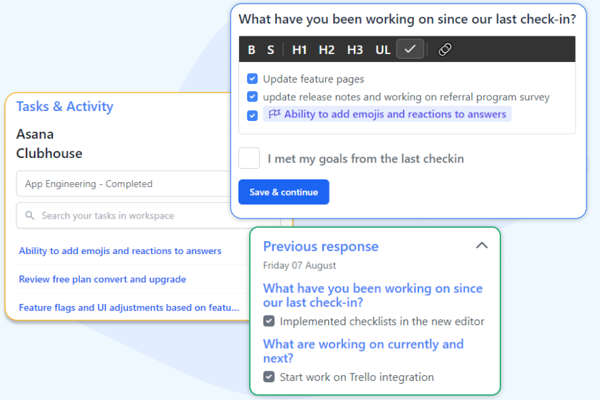
Lastly, creating a meeting template can also help streamline your meetings. This means having a pre-set agenda—that is, knowing what questions to ask and what areas to focus on. This will be different for every type and style of team—and the number of meeting attendees you have—so make sure your template is customized specifically to your team (we'll go over this a little more later).
Taking Productive Meeting Notes
One of the most important things to understand for taking productive meeting notes is the typical learning and forgetting curve.
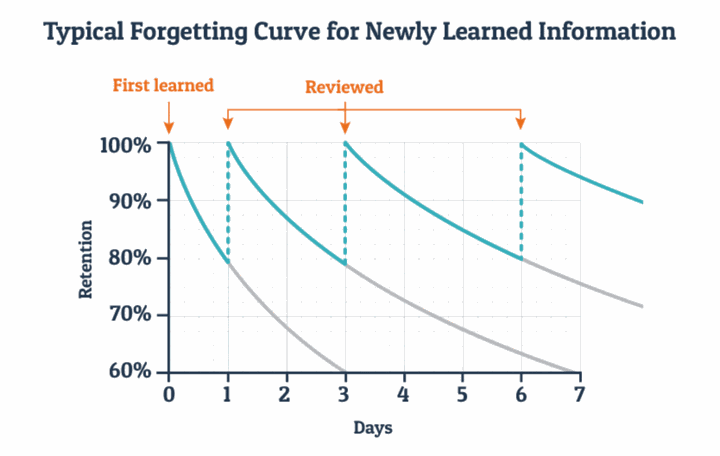
The forgetting curve was developed by German psychologist Hermann Ebbinghaus at the end of the 19th century, and it represents how quickly we lose new info if we don't have a retention strategy. Basically, in order to retain new information, you need to put in active effort to remember it.
One of the easiest ways to help your brain retain information is to review your notes after the meeting to reinforce the discussion in your mind. Another way might be to hand-write your notes, though this may be difficult if you are expected to share your notes to others. Handwriting has been noted by many studies to help give note-takers a stronger understanding of their content than they would have if they took their notes by laptop. But there's more than just that.
While you're taking down your notes, focus on the actual items and goals you discuss. You don't need to worry about writing everything down—in fact, that can actually harm your productivity and cause you to miss important details. Instead, copy down important information such as goals, tasks and blockers.
With this in mind, it's also important to keep an eye towards the future when you're copying down meeting notes. You should also be focusing on what will help you and your team once the meeting is done; for example, ways to improve work and future goals.
Finally, don't forget to tailor what you write down for your meeting notes to your specific style and type of team. What works for a product design team, for example, won't work the same for a software development team. You might need to focus more on deadlines and projects for design teams, and blockers or bugs for software teams. Likewise, customer service teams may need to focus more on completed or resolved tickets and marketing teams on metrics and campaign successes. Creating or using your own meeting notes template can help with this.
Top 3 Note-Taking Frameworks
There are many ways to take notes for your meetings. You can simply copy down some jot notes, or write down key agenda items as they come, But there's also three note-taking frameworks many professionals use to organize their notes and keep on top of their meetings. Each can be used in conjunction with the others, or by their own—it all depends on your team.
We'll go over each quickly here.
Cornell Note-Taking System
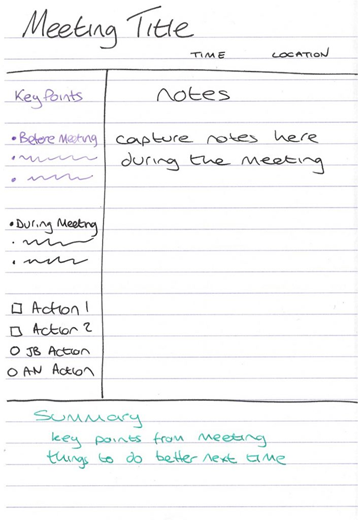
The Cornell Notes system was developed at Cornell University to help students retain knowledge, but don't let that dissuade you: the Cornell system can be useful for everyone. It's also great for those who struggle to properly structure their notes and keep on topic, and for those who need clean notes to send to others later.
To use this method, you first have to split your page into two sections. The right side will be for general notes, while the left is meant for more important information such as key points and takeaways. Then, once your meeting is over, create another section at the bottom where you can quickly summarize your notes into a sentence or two.
Quadrants
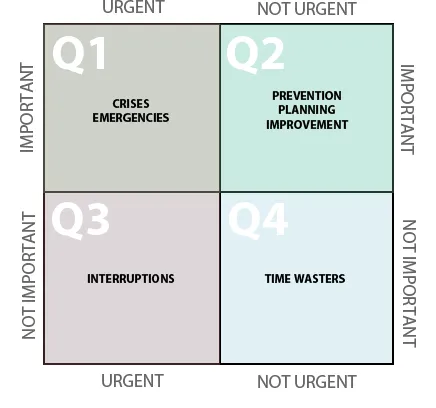
The next method is the Quadrants approach. This method is a simplified version of the Cornell System, and it's a favourite of influential business leaders like Bill Gates because it helps you organize meeting information so easily. Quadrants are best for teams whose main meeting objective is to keep track of tasks and important follow-ups.
To use the Quadrants approach, divide a piece of paper into four sections. The first section is for questions that you think of during the meeting that need to be answered. The next, often labelled as Notes, is for anything that comes to mind during the meeting, such as insights and action items. The third section is a personal to-do list for any deadlines and projects you may be responsible for delivering on later. Finally, the last section is for information you need to pass along to others, such as supervisors or outside contractors.
Mind Mapping

The last note-taking method we want to discuss is mind-mapping. While this might seem strange, non-linear note-taking can be more effective at helping people retain knowledge; for instance, a study from the British Journal of Educational Technology found that non-linear note-takers scored 20% higher for comprehension than linear note-takers. Mind maps can also be extra effective for brainstorming sessions.
Making a mind map is easy. First, come up with your main theme and write it down in the center of your page or worksheet, and then draw lines to branch out into subtopics or themes. As the discussion continues, simply continue to branch out into more detailed points.
What to Do With Your Notes After The Meeting
You might be wondering what's left now that we've discussed how to take meeting notes. But the process of taking good notes doesn't stop once the meeting is over. It's important to go over your notes after you take them to make sure they're clear, concise, and make sense. Who knows—when reviewing them, you might even remember some extra details to add in.
Once you're done this step, make sure your notes get sent to everyone who needs them—and not just meeting participants. This can include superiors, such as managers and coordinators, as well as your team members themselves. Sharing notes with your team can help keep everyone in the loop and on track towards the next meeting.
This kind of future-thinking is the most important part of note-taking. Your meeting notes should be used to inform your future meeting agendas so you can refine and streamline your note-taking process as a whole. This includes the notes themselves as well as any post-meeting feedback you may collect from your team members.
This post-meeting feedback is also crucial because it allows you to get a measure from your team on how well the meetings are working and what should be changed about them. Plus, they can also give team members an opportunity to give any additional details they may have missed during the meeting.
One of the best ways to collect this information is through the use of ScrumGenius, which can help you create and run standups after your meetings to collect feedback. These reports can be run daily, weekly, or on a manual basis, allowing you to control when information is collected.
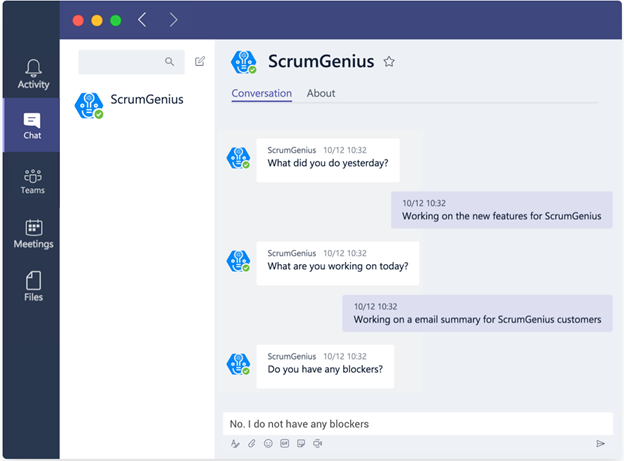
This means that you can easily collect post-meeting thoughts from your team to gather any missed details, or even use ScrumGenius to refine your agenda for the next meeting. Simply create a new report with a few questions, such as what worked well, what didn't, and what could be improved on.
If you want more information on how these reports can help you refine your meeting process, visit our meeting notes report template.
